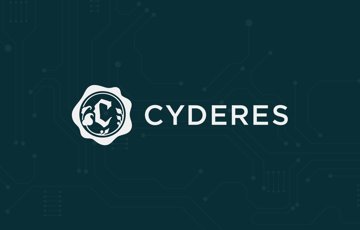Article contributed by Abdiel Louis, Principal Solutions Architect at Cyderes
Modern CISOs know they must evolve their security programs and implement proactive strategies to protect their most sensitive data. The complexity of the today’s threat landscape and continuation of hybrid work requires an approach that ensures people, devices, apps and data are protected, regardless of where they are located or who is accessing them.
Zero trust security – a security model that requires user authentication to gain access to applications and data – does exactly that, offering many advantages over traditional security measures like perimeter-based defenses.
Below, we’ll explore the importance of Zero Trust Security to modern CISOs through use cases in sectors such as energy, healthcare and cloud computing.
What is Zero Trust Security
Zero Trust is based on the principle that you should never trust and always verify. Instead of assuming everything behind the corporate firewall is safe, the Zero Trust model treats every request similarly to those from an open network. Recognizing that threats can be from inside or outside organizations, the Zero Trust model requires continuous validation of users and devices before granting resources access.
Zero Trust Security provides granular access control and real-time monitoring. In addition, data-centric protection helps to reduce attack surfaces and prevent data breaches.
Zero Trust Security Across Industries
Energy: Protecting Critical Infrastructure
Cyberattacks in the energy sector are very common as disruptions to critical infrastructure can have severe consequences. A power plant recently adopted Zero Trust Security to protect its Supervisory Control and Data Acquisition systems that monitor and control industrial processes. The Zero Trust Security enabled the plant to meet multiple challenges, such as remote access requirements and diverse IoT devices.
- Remote access to secure remote access for employees, third-party vendors and contractors
- Control and monitor access to sensitive data systems and systems
- Reduce the possibility of unauthorized access to SCADA systems
- Respect regulatory compliance requirements
Healthcare: Protecting patient data
Healthcare organizations have to protect highly sensitive patient data. Failure to do so can have severe repercussions legally as well as socially. A large hospital implemented Zero Trust Security to address the challenges of securing Electronic Health Records (EHRs), managing access for a diverse workforce and complying with HIPAA regulations. The adoption of Zero Trust enabled the hospital to:
- Ensure secure access to patient records, regardless of the user’s location
- Implement granular access controls based on user roles and responsibilities
- Detect and respond to suspicious activities in real-time
- Maintain compliance with industry regulations
Cloud Computing: Securing multi-cloud environments
As organizations migrate to the cloud, they face new security challenges, including managing access to resources and data across multi-cloud environments. A cloud service provider employed Zero Trust Security to protect its customers’ data while ensuring seamless access for authorized users. The implementation of Zero Trust allowed the provider to:
- Establish consistent security policies across all cloud platforms – both private and public
- Access to sensitive data and applications should be restricted based on context and user identity
- Monitor user behavior to identify potential threats
- Offer customers a secure, reliable, compliant cloud environment
How to Implement Zero Trust Security within Your Enterprise
CISOs know the buck stops with them to address the modern security needs of their organization. You must anticipate and protect the organization’s systems and data from ever-evolving cyber threats.
The Zero Trust Security model is the best way to tackle these threats in today’s digitally complex landscape. Zero Trust can help you protect your company’s most important assets, ensure regulatory compliance and maintain customer confidence.
- Start by conducting a thorough assessment of your security profile to identify any gaps.
- Based on this assessment, develop a strategic roadmap for Zero Trust implementation.
- Work closely with all stakeholders in your company and bring in the right talent, tools and training to support the security team.
For more cybersecurity tips, follow Cyderes on LinkedIn and Twitter.
Take the first step in transforming your cybersecurity program with Cyderes and Stairwell
Cyderes’ world-class capabilities of managed detection and response solutions for the modern enterprise integrate seamlessly with Stairwell’s flagship Inception platform, providing an innovative and truly ground-breaking solution that empowers organizations to stay a step ahead of threat actors. Connect with our team today to learn how we can help you take your security program to the next level.

